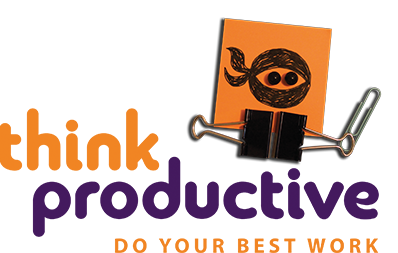Changing Work Pattern is a Challenge
At Think Productive Australia we are big fans of flexible working, and so are our Time Management Training participants. In fact, according to various studies, 87% of people have reported they are already, or would like to be, working flexibly. However, we still regularly get asked how to start having conversations around flexible work arrangements and how managers and their teams can make it work.
Over in the UK one of our Productivity Ninjas Hayley Watts, is a top advocate for flexible working. She says it has helped her out personally many times, but also allows her to do her best work. When we think of flexible working, our minds immediately assume establishing different arrangements for working parents. It’s not just parents who want to work in a way that better suits them. More teams should consider whether their current arrangements work and how things could be improved by flexible working.
We hear a lot of trainees saying that simply asking for more flexibility can damage their manager’s perception of their commitment. We even meet a lot of managers who completely oppose flexible working. Since 87% of people surveyed want more flexibility, it seems highly likely that a good number of those surveyed must be managers themselves?

But Where to Begin?
Firstly, check out your company’s flexible working policy. We’ve seen quite a few that say they offer flexible working, but in reality go on to set out restrictions which make it impractical. First step. Find out if your company has one, but don’t get disheartened if it doesn’t tell you what you want to hear.
Secondly, find out who will be making the decision about your request. What will they want from you in terms of working and hours? So, for example, do you usually have a team meeting on the first Monday of the month, a regular monthly account balance or stocktake? If so your manager might want you there for those things. Think about what they will care about, whether they are essential, and don’t pick battles you can’t win. This will help you to avoid outright rejection and prepare you to overcome objections later on, if there are any.

What would your ideal be? Work that out first. Then decide on what the essentials are. You should begin by asking for your ideal, but know where you are prepared to compromise.
Ok, Now, What Do I Say?
Before you even start the conversation, think about how the person you need to ask likes to work and make decisions. Perhaps they prefer email, to allow them to mull things over? Maybe they prefer to discuss things face to face? If you work with someone who prefers email you could introduce the issue before you talk to them by sending something like “I’ve been thinking about the possibility of flexible working. I’ll send you some ideas by email, could you take a look?” That way you can gauge their initial reaction. If you think your proposal will be met with resistance, you might prefer to have the conversation in person. Much easier to gauge reaction as you have the discussion, and keep the conversation open.

Some Conversation Starters
“I’ve been reading about flexible working, and would like to give it a try. I think it could help me to be more productive. When could we talk about it in more detail?”
“I’ve been thinking that some flexible working could help me to do a better job. What are your thoughts on flexibility?”
This could be a way to test the water, putting the ball in someone else’s court. Not so good if you think they might just say no straight away.
If your plans are fairly straightforward, for example, you’d simply like to start later and stay later, something that’s easy to explain, just ask if you can do that. Be prepared to outline the benefits when you introduce the subject and remember, being more productive and happier at work is a huge benefit in itself. For example: “If I were to start work later, I think I could be much more productive.”
Things to Consider
1) Who do you need to get on board to help you make the case to the decision maker?
2) Identify possible objections and prepare answers for them, showing you have truly thought this through.
3) Be prepared to suggest that you test new arrangements out for a time to see how it works. Trial new arrangements for a month or 6 weeks and fix a meeting to discuss the results. This way you can open the door with a possible opt-out for your manager, and tweak arrangements as problems arise in the trial period. This will lessen the chance of an outright “No” and allow your flexible arrangements to adapt and survive. You can also fix reviews in your diary with your manager to test that you are on the right track, and demonstrate that you’re happy to continually review your new way of working.
4) A lot of the time, conversations seem much more negative and daunting in our minds than they actually are. If you’re really anxious about approaching this subject, practice with a colleague or friend and play through different outcomes. It might well go better than you ever expected!

You may want to work remotely, cut your hours or simply explore different options. Either way be brave and start having those conversations. You can connect with Think Productive Australia directly here or with Matt Cowdroy on LinkedIn.
By Hayley Watts
Hayley is Think Productive UK’s Productivity Ninja for London and the South East of England.
